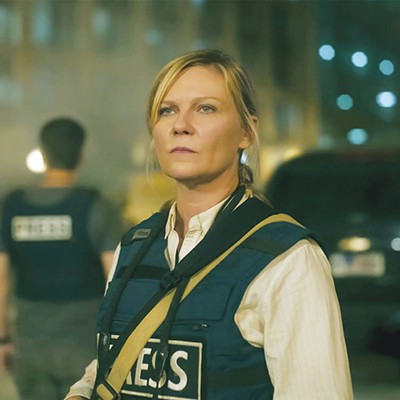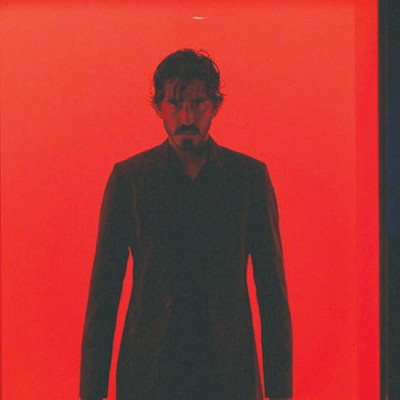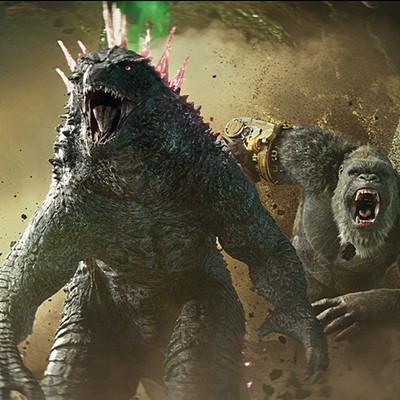The parallels to Superman are uncanny: The Lone Ranger was created in the 1930s as a new kind of American hero—a fighter for all that is right and just in the world. He is a bit of a square, a bit of an anachronism, and after lapsing into irrelevance for decades, he has been rebooted for 2013. One wonders if, in the right hands, the Lone Ranger could not just recapture public imagination, but become an emblematic totem of heroism for today's very different, troubled era.
These are not the right hands. With this incredibly expensive new The Lone Ranger, one imagines Disney executives crossing their fingers for something like Pirates of the Caribbean. They've ended up with nothing short of a fiasco. This is a lumbering, nonsensical, crazed slab of big-budget lunacy. Expect to hear Lone Ranger jokes in late-night talk show monologues for the next few weeks. It's an absolute mess.
The worst part of the film is a truly appalling framing device, in which a boy wanders into a carnival tent in the 1930s. He views a stuffed buffalo and other Wild West attractions, including "The Noble Savage"—a frozen Johnny Depp in old-age makeup, a dead crow atop his head. Depp comes to life and reveals himself as Tonto, the Lone Ranger's legendary sidekick, and tells the annoying child a story about the masked man's origins.
The film wants to be playful with Tonto's unreliable narrator, so we jump around chronologically as he revises details. The net result is the jumbling of a narrative that's already pretty confused to begin with. In 1869, straitlaced John Reid (Armie Hammer) takes a train to his Texas hometown, which looks suspiciously like Utah's Monument Valley. A notorious outlaw's aboard, too—Butch Cavendish, played with sinister relish and some truly nauseating makeup by a pretty enjoyable William Fichtner—as is Tonto, and when Cavendish escapes, Tonto and Reid find themselves in the middle of a multimillion-dollar action sequence that will probably make a really cool theme park ride.
Newly deputized, Reid joins a gang of Rangers to go after Cavendish, who slaughters all of them except Reid, left for dead. Tonto and his dead crow show up and inform Reid that Cavendish is a man-eating Wendigo, an evil spirit with lycanthropic powers. The pair comes across Helena Bonham Carter as a hooker with a leg made out of ivory, and a magical white horse (it's Silver, of course) that ends up doing most of the hard work in fighting the bad guys. This all makes about as much sense as it sounds.
The tone of the movie veers wildly, as lighthearted swashbuckling sequences bump up against some seriously dark stuff. It's also surprisingly violent, if not exactly bloody—the body count is incredibly high, including the slaughter of not one but two entire Native American tribes. Depp's performance as Tonto, buried under Comanche warrior makeup, is as racially insensitive as you've heard, and Hammer is likeable but ultimately vanilla.
This is all a real shame. Director Gore Verbinski is obviously a fan of Sergio Leone, and the further The Lone Ranger dips into the Italian director's brand of operatic surreality, the more fascinating it becomes. And the Western, as a genre, deserves to have a thoughtful renaissance. But ultimately this movie lives in big, dumb, noisy blockbusterland. It's loud, racist, baffling, and overlong. Its plot is nearly hijacked by imagined superstitions. Its narrator is a liar, and its hero jettisons his moral compass in order to take care of business.
Hmm. Maybe The Lone Ranger is the hero America deserves after all.
The Lone Ranger
dir. Gore Verbinski
Various Theaters


















